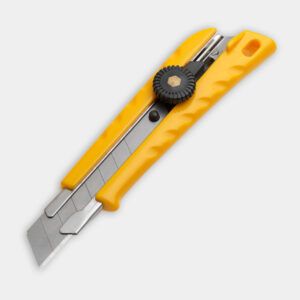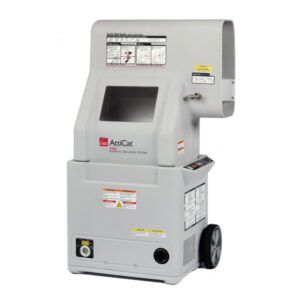Project details
Skill
Cost
Estimated Time
Insulating your attic with fiberglass is an affordable way to make your home energy-efficient and more comfortable. Fiberglass can improve your attic’s thermal performance, which means you can save on energy bills. Read about how to insulate your attic with fiberglass and check for proper ventilation in our step-by-step guide. You can follow along as This Old House general contractor Tom Silva demonstrates in the video above.
Preparing for Attic Insulation
Start your installation process by preparing your space and gathering the necessary materials and tools.
Safety Precautions
Keep yourself safe while you install your insulation by following the tips below.
- Clear the attic space of any obstacles or debris.
- Check for proper ventilation in the attic space.
- Properly ventilate your space to avoid inhaling fine particles.
- Protect your knees while you work on the floor by wearing knee pads.
- Wear protective gear, such as work gloves, dust masks, and safety goggles..
Materials and Tools Needed
Gather the follwoing materials and tools before you start insulating your space:
- Fiberglass batts (faced and unfaced)
- Insulation blower
- Loose-fill fiberglass insulation
- Measuring tape
- Ruler or straight-edge
- Staple gun
- Utility knife
Inspecting the Attic
Inspect your attic for existing issues such as leaks, gaps, or damage before you begin installation. These could compromise the insulation’s effectiveness.
Checking for Air Leaks
Identify and seal any air leaks in the attic. Check these areas:
- Around pipes and ductwork
- Attic hatch or door edges
- Chimney penetrations
Repairing Damaged Areas
Repair any damage you notice to your attic, such as rotting wood or broken joists. This will leave you with a secure base for your insulation.
Installing Fiberglass Batts
Installing fiberglass batts is the first step in insulating your attic. This process involves cutting and fitting the insulation between floor joists.
Measuring and Cutting Batts
- Measure the length of each joist bay.
- Cut fiberglass batts so that they fit tightly between floor joists.
- Measure and cut batts to allow for proper ventilation around eaves.
Cut the batts to the required measurements with a utility knife and straight edge. Make sure the batts fit snugly to minimize gaps.
Placing Batts Between Joists
Follow the steps below to place batts between joists:
- Lay the fiberglass batt between the joists. Make sure the paper vapor faces down toward the heated space.
- Lightly press the batt down between the joists.
- Don’t cover soffit vents as you install insulation along the eaves.
Adding a Second Layer of Attic Insulation
You may need to add a second layer of insulation, which involves using unfaced fiberglass batts to increase the overall R-value of your attic insulation.
Choosing the Right Insulation
You must use fiberglass batts when installing a second layer of insulation. This will prevent moisture from becoming trapped between layers and will lead to better overall insulation.
Installing the Second Layer
Follow these steps to install the second layer of insulation:
- Lay unfaced fiberglass batts so that they’re perpendicular to the floor joists.
- Butt the batts tightly together.
- Make sure the second layer covers the entire attic floor, including over the existing insulation.
This step helps you achieve an R-38 insulation value, which will significantly improve your attic’s thermal performance.
Insulating Under the Attic Floor With Fiberglass
You’ll need to use a different approach for areas of the attic that feature existing floorboards:.
Preparing the Area
Follow these steps before beginning to insulate under the attic floor:
- Remove one or two floorboards so that you can access the space beneath.
- Inspect the area for any existing insulation or obstructions.
Blowing in Loose-Fill Insulation
Once the area is prepped, install the insulation:
- Use a pump to blow in fiberglass loose-fill insulation.
- Insert the hose under the floor and turn on the blower.
- Allow the loose-fill insulation to pack tightly into the space beneath the floor.
- Continue until you fill the void. The big hose will push out at this point.
Checking Attic for Proper Ventilation
Ventilation prevents moisture buildup and helps your insulation perform better.
Types of Attic Vents
Consider installing the types of vents below.
- Gable vents: Installed on the gable ends of the attic, these vents allow warm, stale air to escape, preventing moisture buildup and helping to maintain a cooler roof temperature.
- Ridge vents: Ridge vents run along the peak of the roof, promoting airflow by allowing hot air to escape from the highest point of the attic. This is crucial for preventing heat buildup that can compromise your insulation’s performance and lead to ice dams in colder climates.
- Soffit vents: Soffit vents are located under the eaves of the roof and work together with gable and ridge vents to create continuous airflow that draws fresh, cooler air into the attic. This helps your insulation perform more effectively while reducing the risk of condensation and mold.
Maximizing Attic Insulation Effectiveness
Here are some other ways to get the most out of your attic insulation:
- Add an attic fan to improve air circulation.
- Insulate and weatherstrip the attic access door or hatch.
- Seal air leaks before you install insulation.
Monitoring and Maintenance
Regularly check your attic insulation to make sure it’s functioning properly. Look for signs of deterioration or moisture infiltration, and address any issues immediately.
Energy Savings
Insulating your attic properly can make your home more energy efficient. Taking time to properly install insulation will lead to heating and cooling savings all year long.


